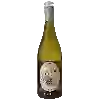
Winery Paul MasGrenache de Grenache Blanc
In the mouth this white wine is a .
This wine generally goes well with vegetarian, poultry or lean fish.
Taste structure of the Grenache de Grenache Blanc from the Winery Paul Mas
Light | Bold | |
Dry | Sweet | |
Soft | Acidic |
In the mouth the Grenache de Grenache Blanc of Winery Paul Mas in the region of Languedoc-Roussillon is a .
Food and wine pairings with Grenache de Grenache Blanc
Pairings that work perfectly with Grenache de Grenache Blanc
Original food and wine pairings with Grenache de Grenache Blanc
The Grenache de Grenache Blanc of Winery Paul Mas matches generally quite well with dishes of pasta, vegetarian or poultry such as recipes of pasta with tuna and laughing cow, goat cheese and bacon quiche or croque madame.
Details and technical informations about Winery Paul Mas's Grenache de Grenache Blanc.
Discover the grape variety: Merlot
Merlot is a red grape variety with small black berries that appeared at the end of the 18th century. It is produced in most of the Bordeaux terroirs, where it represents 58% of the planted area, and its best terroir is located in Pomerol and Saint-Emilion on cool, clay-limestone soils. At the mythical Château Pétrus, the wine is made with 95% Merlot, with a dark, dense colour, aromas of red and black fruits and a superb range of flavours, the Merlot transforms during its ageing to give way to notes of prunes, undergrowth and spices. On the palate, it is supple with distinguished tannins. It is often blended with Cabernet Sauvignon. Merlot is no longer exclusive to Bordeaux, it is nowadays vinified all over the world.
Last vintages of this wine
The best vintages of Grenache de Grenache Blanc from Winery Paul Mas are 2019, 2018
Informations about the Winery Paul Mas
The Winery Paul Mas is one of of the world's great estates. It offers 133 wines for sale in the of Languedoc-Roussillon to come and discover on site or to buy online.
The wine region of Languedoc-Roussillon
Languedoc (formerly Coteaux du Languedoc) is a key appellation used in the Languedoc-Roussillon wine region of southern France. It covers Dry table wines of all three colors (red, white and rosé) from the entire region, but leaves Sweet and Sparkling wines to other more specialized appellations. About 75% of all Languedoc wines are red, with the remaining 25% split roughly down the middle between whites and rosés. The appellation covers most of the Languedoc region and almost a third of all the vineyards in France.
The word of the wine: Removal of shoes
In the spring, this operation consists of removing the mound of earth formed at the foot of the vines by ploughing between the rows in the autumn.














